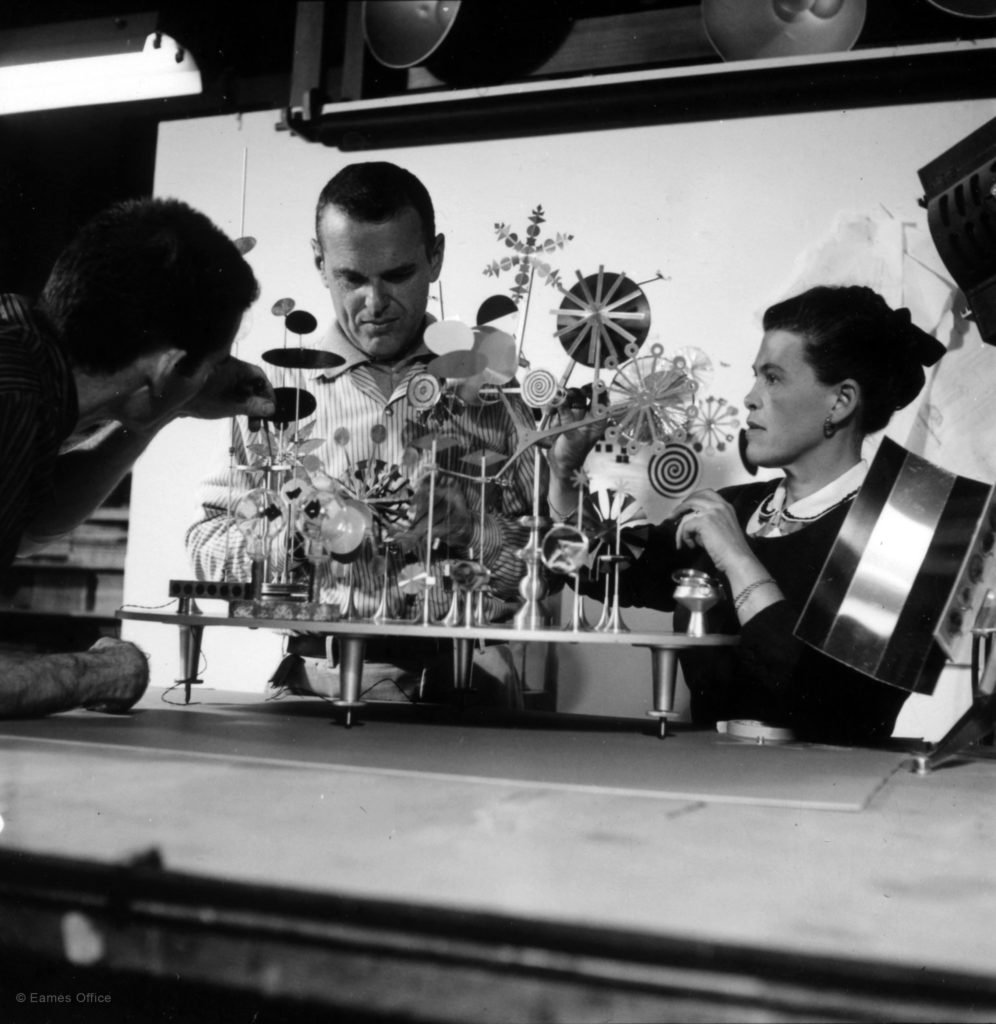Additional Information
The Forecast Program invited designers across the country to submit aluminum prototypes highlighting the strengths of the material. By programs end, over 20 Designers across the country contributed prototypes to demonstrate the advantage of aluminum. Among those designers were Alexander Girard, who developed aluminum shelving, and Isamu Noguchi, who used aluminum to design a Prismatic Table. The Eames Office, famous for its furniture, was specifically tasked with creating an aluminum toy. In the true Eames fashion of “Toys are never as innocent as they appear,” they set forth to investigate the use of solar energy in combination with the lightweight, reflective properties of aluminum.

In Charles and Ray’s first attempt, they used an aluminum parabolic reflector to boil water, making steam, which ran an engine that moved the various parts of a toy. Shortly after that, an engineer introduced Charles and Ray to photovoltaic cells made by the International Rectifier Corporation.
After months of experimenting, the office created what they called the Solar Do-Nothing Machine. But this do-nothing machine did something. The contraption converted sunlight into electrical energy to run ten motion displays. A polished aluminum reflector screen reflected sunlight onto two panels of twelve cells, converting the light to electrical energy. Wires conducted the energy to six small one and a half volt motors, placed on (you guessed it) aluminum pedestals, driving a series of pulleys and belts, causing the mounted shapes to revolve.
“Then it occurred to us that there are some things worth promoting, and the conservation of natural resources looked like a likely one.”
Charles Eames
The Eames Solar Toy, as whimsical as it may seem, is very purposeful. It turns out that this is a machine that “produces” awareness. When Alcoa asked Charles and Ray to build an aluminum toy, first they wondered whether to take on the problem at all. “Life,” said Eames, “is too full of real problems to permit introducing hypothetical ones.” They only took on the assignment when they realized that the toy could be useful and educational. Charles said, “Then it occurred to us that there are some things worth promoting, and the conservation of natural resources looked like a likely one. A demonstration of solar energy as a practical source of power appeared to be a not uninteresting way of promoting resource conservation.”
Explore Similar Works
Related Products
Browse a curated selection of Eames Office products we think you’ll love

The Eames Toy
$118




